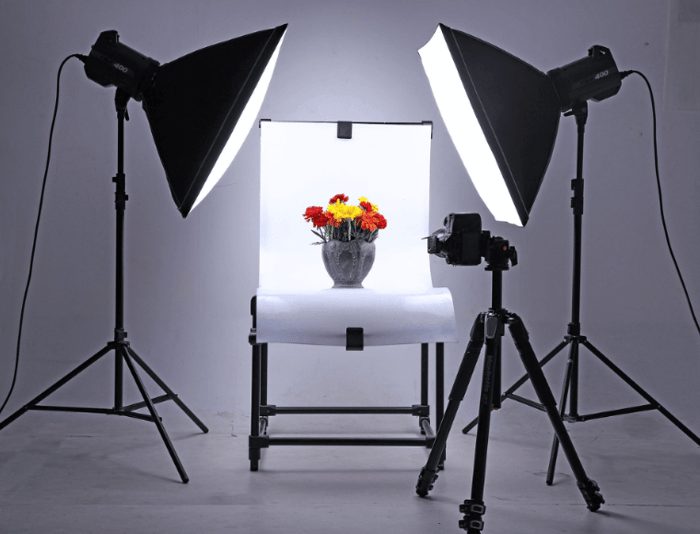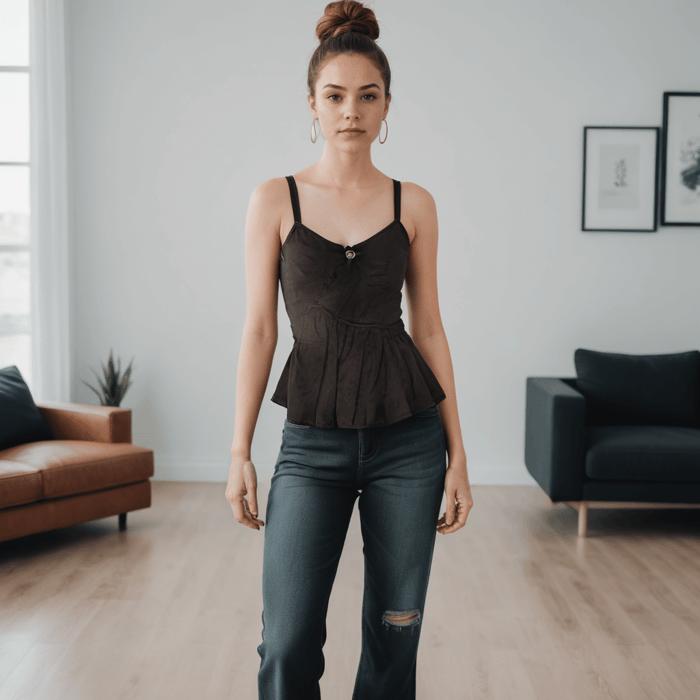Product Photography for Ecommerce: Tips for High-Converting Images
Table of Contents
- Why Product Photography Matters
- Planning Your Ecommerce Photo Shoot
- Mastering Lighting and Composition
- Editing for Consistency and Quality
- How AI is Changing Product Photography
- Optimizing Images for Ecommerce Performance
- Real-World Example: How Better Photos Drive Results
- Summary Table: Ecommerce Photography Essentials
- Product photography for ecommerce last thoughts
- FAQ: Product Photography For Ecommerce
When it comes to eCommerce, great product photography it’s completely necessary. Whether you're selling clothing, accessories, home goods, or beauty products, your visuals set first impressions, influence purchasing decisions and build trust with shoppers. In a world of endless scrolling and short attention, images with a higher quality can be the difference between a sale and a lost customer. They create emotional resonance, convey quality and detail and reflect the professionalism of your brand and that's why it is so important the product photography for ecommerce.
This comprehensive guide covers everything you need to know to create compelling ecommerce product photos that convert. From lighting and composition to editing workflows and AI automation, we’ll walk through how to create standout visuals.
Why Product Photography Matters
Images are often the first and most important touchpoint between your product and your customer. In ecommerce, your photo is your handshake and your only chance to say, “trust us, this is worth buying.” Strong product photography:
Establishes professionalism and brand trust
Highlights the product’s best features, textures and materials
Communicates your unique style, voice, and market positioning
Enhances engagement across digital channels like ads, product pages, and social feeds
In short, better images lead to better results.
Clear visuals remove purchase hesitation, support faster decision-making and reduce return rates. Photography isn’t just decoration, it’s conversion science.

Planning Your Ecommerce Photo Shoot
Preparation is everything. Rushed shoots often lead to inconsistent visuals and extra editing work so taking the time to plan will save you effort later. Before picking up a camera, or generating content with AI, consider:
Product list: Which SKUs or colorways need photography? Are there new arrivals or updated packaging to include?
Shot list: Define the types of images you need, main product shots, close-ups, lifestyle scenes, size references, or animations.
Backgrounds: Choose clean, consistent settings that align with your brand. White or neutral tones work well for most catalog shots.
Props and styling: Keep it minimal but intentional. Everything in the frame should support the product story.
Models: Select talent that resonates with your customer base and reflects the diversity of your audience.
Having a style guide or creative brief in place ensures alignment across team members, freelance photographers, or AI generators.

Mastering Lighting and Composition
Lighting is the foundation of any great photo. It shapes how the product’s colors, textures, and dimensions are perceived. Here’s how to master it:
Natural light: Ideal for lifestyle and editorial looks. Shoot near large windows and use reflectors to balance shadows.
Studio lighting: Best for consistency. Use softboxes, light tents, or ring lights to create even, controlled setups.
Avoid harshness: Diffuse direct light to eliminate overexposure, harsh shadows, or shiny spots on reflective materials.
Composition also plays a big role in visual storytelling:
Use the rule of thirds to place your subject dynamically within the frame.
Incorporate negative space for clean, minimal designs.
Show multiple angles, including side views, product-in-use, packaging, and close-ups of textures.
Keep the background clean and distraction-free to make the product pop.
Great composition ensures your product looks intentional and professional—no matter the platform.

Editing for Consistency and Quality
Post-production isn’t about over-editing, it’s about elevating and unifying. Editing ensures every image looks polished and aligns with your visual brand.
Color correction: Match the product’s true colors across all devices. Consistency here reduces returns.
Retouching: Remove dust, scratches, or creases. Enhance clarity while keeping the product realistic.
Cropping and resizing: Adapt visuals for different channels: square for social, portrait for mobile, landscape for desktop.
Naming and compression: Use descriptive, SEO-friendly filenames (for example, "black-leather-crossbody-bag.jpg") and compress images to improve load speeds without losing quality.
Editing tools like Adobe Lightroom, Photoshop, or Figma are common go-tos. For scale, consider using batch processing or AI enhanced editing software to streamline the process.

How AI is Changing Product Photography
AI tools are transforming the way ecommerce brands approach photography. Instead of traditional shoots, many teams are turning to platforms like Modelia to generate hyper-realistic product visuals in minutes.
With Modelia, ecommerce brands can:
Create model, flat-lay, and lifestyle imagery without needing physical samples
Maintain full brand consistency across product categories
Create realistic videos of models just from one photo
Easily adapt content for use in PDPs, paid ads, social campaigns, and marketplaces
Modelia eliminates production delays, reduces costs, and unlocks more creative flexibility. Brands no longer need to coordinate complex shoots or spend weeks editing. The result: high-quality visuals, delivered at speed, with the freedom to iterate and scale.

Optimizing Images for Ecommerce Performance
Creating stunning visuals is only the beginning. To truly make your product photography work for ecommerce, you need to optimize for performance—ensuring your images load fast, rank well on search engines, and look perfect across platforms.
Page speed matters:
Large, uncompressed images can slow down your website, hurting both user experience and SEO rankings. Use modern, lightweight formats like WebP or JPEG XL, and compress your images without compromising quality. Tools like TinyPNG, ImageOptim, or built-in features in platforms like Shopify can help strike the right balance.
Visual SEO:
Naming your image files properly is critical. Instead of generic filenames like “IMG_4583.jpg,” go for descriptive names like “black-leather-crossbody-bag.jpg.” Don’t forget to write clear, keyword-friendly alt text, this improves accessibility and helps search engines understand your content.
Cross-platform consistency:
Each channel, your website, social media, marketplaces—has different image specs. Make sure you resize and crop images specifically for each platform to avoid awkward framing or visual quality loss. This ensures a professional look and maximizes your brand impact.
Helpful tools:
With a platform like Modelia, you can automatically generate optimized image variations for different platforms, streamlining your workflow and keeping visuals consistently high-quality across every touchpoint.

Real-World Example: How Better Photos Drive Results
A women’s fashion brand focused on premium loungewear updated its photography using AI model images with consistent lighting, minimalist backgrounds, and lifestyle environments that reflected their target audience’s daily life. The improvements led to:
A 25% increase in time spent on product detail pages
A 40% lift in conversions compared to prior imagery
A 60% reduction in content production costs per SKU
The brand also reported a drop in returns due to more accurate product representation. Professional visuals can dramatically improve the customer journey and brand credibility.
Summary Table: Ecommerce Photography Essentials
Element | Why It Matters | Tips to Optimize |
|---|---|---|
Lighting | Shapes how colors and details appear | Use soft, even light; avoid harsh shadows |
Composition | Directs attention and creates visual interest | Follow rule of thirds; use clean framing |
Editing | Ensures polish and brand consistency | Retouch, color-correct, and optimize sizes |
Platform Adaptation | Makes content reusable across touchpoints | Resize and reformat for mobile, ads, etc. |
AI Tools (like Modelia) | Streamline content creation and speed | Generate high-quality images at scale |
Product photography for ecommerce last thoughts
Ecommerce is a visual-first experience. Your photography speaks louder than any product description. It builds trust, evokes emotion, and ultimately drives buying decisions.
Investing in strong visual content is one of the highest ROI moves your brand can make. Whether you’re photographing products in-house, hiring a pro, or leveraging AI platforms like Modelia, the key is consistency, clarity, and customer-centered creativity.
Start with the essentials, optimize over time, and let your visuals tell the story of your brand.
FAQ: Product Photography For Ecommerce
What is product photography for ecommerce?
Product photography for ecommerce involves capturing high-quality images of products to showcase them online, helping customers understand the details, colors, and features before purchase.
Why is product photography important for ecommerce?
Good product images increase trust, improve user experience, reduce returns, and boost conversion rates by giving customers a clear and appealing view of the items.
What are the key elements of successful ecommerce product photography?
Lighting, background, angles, consistency, and image resolution are crucial. Using multiple views, close-ups, and lifestyle shots can also enhance customer perception.
Can AI help improve product photography for ecommerce?
Yes, AI tools can automate background removal, recolor products, generate on-model images, and optimize images for various platforms, saving time and reducing production costs.
How would you rate this article:
Related Articles
- Top 5 AI Background Removal Tools for Effortless Photo Editing
- The Future of AI Shopping: Smarter, Faster, Personalized
- Influencer Marketing for Small Business: Step by Step Guide
- AI Video Generator for Shopify
- Change Clothes in Photos Instantly with AI
- AI Photo Restoration: Revive Old Photos with Cutting-Edge Artificial Intelligence Technology
- Best 10 Alternatives to X-Design for AI-Enhanced Fashion Content
- How to Use an Outfit Visualizer for Fashion Inspiration
- Fashion Sketch Templates for Your Next Collection
- Christmas Outfit Ideas for a Stylish Holiday Season
